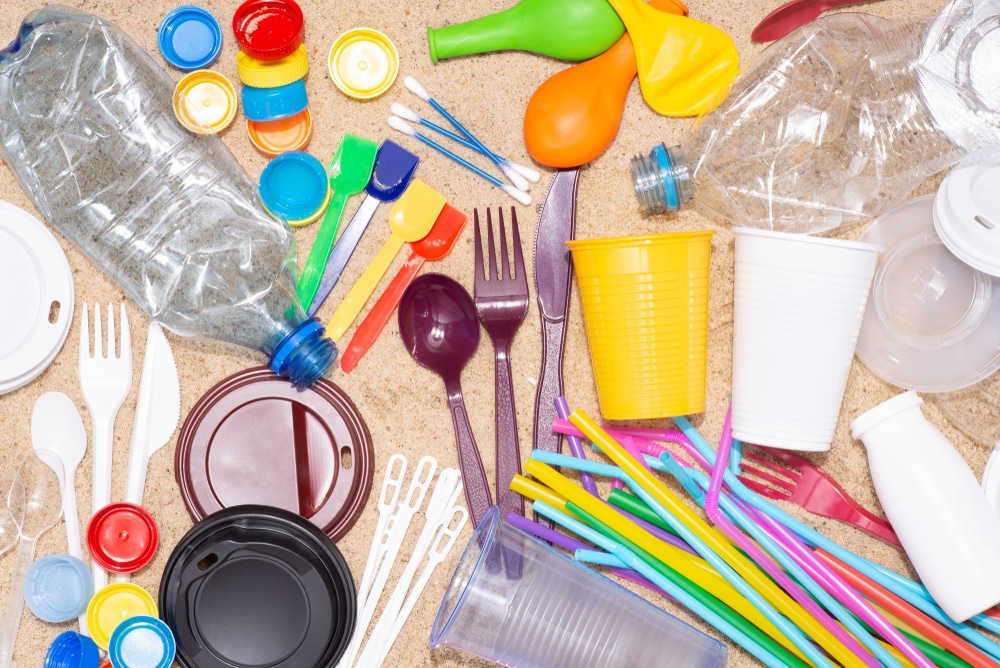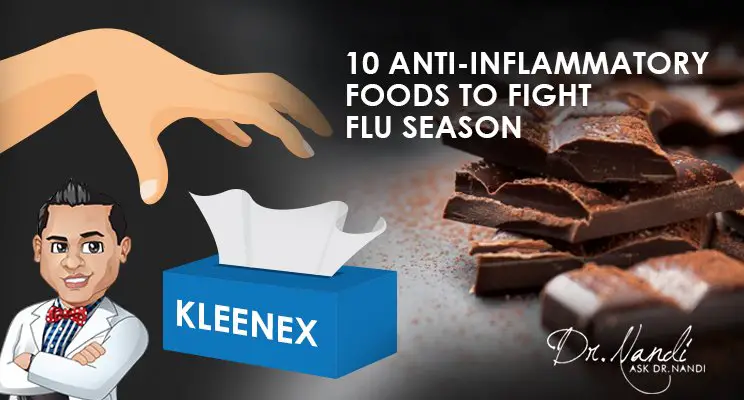Have you ever felt like your body is betraying you? For many, especially women, the ordeal of dealing with fluctuating hormones can feel like an unending battle. From the dread of painful menstrual cycles to unexplained weight changes that leave you puzzled, the journey to hormonal balance seems fraught with challenges. And if you’ve tried altering your diet or incorporating supplements without success, you might be quick to chalk it up to the aging process. But, what if the real antagonist in your story is something as mundane as the plastics around you?
Plastics, ubiquitous in our daily lives from the water bottles we drink from to the food wraps we use, harbor a secret: they are teeming with chemicals that can disrupt our hormonal equilibrium. In this piece, we’ll delve into the shadowy world of these endocrine disruptors. We aim not just to illuminate their impact on your hormonal health but also to guide you towards healthier alternatives. Join us as we explore this pressing issue, and take the first step towards reclaiming control over your well-being.
Understanding Endocrine Disruptors: The Unseen Hazard
At the heart of our hormonal health is the endocrine system, a complex network of glands tasked with producing and releasing hormones. These biochemical messengers are pivotal, orchestrating a myriad of bodily functions—from regulating our appetite and body temperature to managing growth, mood, and reproductive health. It’s a finely tuned system where even the slightest imbalance can resonate throughout the body, manifesting in myriad, often perplexing, ways.1
Enter the world of plastics, which, unbeknownst to many, play a significant role in disrupting this delicate hormonal balance. The majority of plastic products contain endocrine-disrupting chemicals (EDCs), which can wreak havoc on our hormonal health. These disruptors work in insidious ways, either by mimicking natural hormones, blocking their normal action, or interfering with hormone production altogether. The result? A cascade of potential health issues, rooted not in our bodies’ natural aging process but in our daily interactions with plastic products.2
Among the myriad of hormones affected, estrogen—a key player in both men’s and women’s health—faces significant risks from these chemical interlopers. Substances like Bisphenol A (BPA), a common component in many plastics, can mimic estrogen to such a degree that they lead to conditions like estrogen dominance. This revelation shifts the focus from merely aging to a more concerning, external cause of hormonal imbalance, prompting a reevaluation of our lifestyle choices and the materials we come into contact with daily.
The Sneaky Culprits: Identifying Endocrine-Disrupting Chemicals
As we peel back the layers on the impact of plastics on our hormonal health, it becomes imperative to pinpoint the specific chemicals we should be wary of. Understanding these endocrine disruptors in detail can empower us to make informed decisions, steering clear of their harmful effects. Here are some of the key players in the world of plastics that are known for their hormone-disrupting properties:
- Phthalates: These chemicals are what make plastics flexible and durable. Commonly found in food packaging, personal care items, and even medical devices, phthalates can interfere with hormone function, particularly by acting as anti-androgens, which can affect reproductive health and metabolism.
- Bisphenols, including BPA and BPS, are notorious for their estrogen-mimicking abilities. Used to harden plastics, they’re present in water bottles, food containers, and even on the inside of cans. Their ability to bind to estrogen receptors can have profound effects on everything from fetal development to energy levels and reproductive health.
- Per- and polyfluoroalkyl substances (PFAS) are used to make surfaces resistant to stains, grease, and water. Found in food packaging, non-stick cookware, and water-repellent fabrics, PFAS can lead to hormonal imbalances, affecting thyroid function and menstrual cycles.
- Perchlorate is a chemical used in plastic packaging that comes in contact with food, disrupting thyroid function by blocking the uptake of iodine, crucial for hormone production.
- Polyvinyl Chloride (PVC), identified by recycling code #3, is used in various plastic products and is linked to several health issues, including hormonal imbalances and increased cancer risk.
- Polystyrene (PS), known for its use in disposable plates, cups, and packaging, contains styrene, a substance that can mimic estrogen and affect thyroid function and reproductive health.
- Polycarbonate (PC) plastics, often marked with recycling code #7, are used in water bottles and food containers. Despite being durable, they can leach BPA, a chemical with significant estrogenic activity.
Armed with knowledge about these chemicals, consumers can start to make healthier choices, looking for alternatives to products that contain these harmful substances. Avoiding plastics marked with recycling codes #3, #6, and #7, unless they’re explicitly labeled as made from safer materials like PLA, can be a significant first step in reducing exposure to endocrine disruptors. This awareness is crucial in navigating the modern world’s challenges to our health, empowering us to make choices that better support our hormonal well-being.

The Path of Exposure: Understanding How EDCs Enter Our Bodies
Living in a modern world means that complete avoidance of endocrine-disrupting chemicals (EDCs) is nearly impossible. These stealthy invaders find their way into our bodies through various avenues, each contributing to the delicate balance of our hormonal health. From the food we eat and the water we drink to the personal care products we use and the air we breathe, EDCs are omnipresent, silently infiltrating our lives.3
The primary route of exposure is through consumption—ingesting food or beverages that have been in contact with plastics containing EDCs. This can happen through packaged foods, water bottles, and even the coatings inside cans. Another significant source is the use of personal care products like lotions, cosmetics, and shampoos, which often contain phthalates and other hormone-disrupting chemicals. Even the dust in our homes can carry these chemicals, shedding from plastic products and settling on surfaces.
What makes this exposure particularly concerning is the cumulative effect of these chemicals on our bodies. Even in small amounts, EDCs can disrupt the endocrine system, especially as they accumulate over time. Certain activities, such as heating food in plastic containers, using plastic water bottles exposed to sunlight, or repeatedly using and washing plastic items, can increase the rate at which these chemicals leach into our food and drinks, elevating our risk of exposure.
Recognizing the pervasive nature of EDCs underscores the importance of proactive measures to minimize our interaction with these chemicals. While it’s unrealistic to live a life completely devoid of plastics, understanding the pathways through which these chemicals enter our bodies empowers us to make more informed choices about our lifestyle and the products we choose to bring into our homes. By addressing these exposure routes, we can take meaningful steps toward protecting our hormonal health and overall well-being in the face of an increasingly plastic-filled world.
Navigating Exposure: Strategies for Minimizing Risk
In an era where plastics pervade almost every aspect of our lives, completely avoiding endocrine disruptors may seem like an insurmountable challenge. However, by adopting certain practices and making mindful choices, we can significantly reduce our exposure to these harmful chemicals. Let’s explore some practical strategies to shield ourselves and our families from the invisible threats posed by plastics:
- Revamp Your Kitchenware: Begin by phasing out plastic containers, bottles, and utensils. Opt for alternatives made from glass, stainless steel, or ceramic. These materials do not leach chemicals into food or beverages and are safer for both hot and cold items.
- Mindful Food Preparation: Never heat food in plastic containers. High temperatures can cause plastics to break down and release harmful chemicals. Use glass or ceramic dishes for microwaving and store leftovers in non-plastic containers.
- Choose Wisely at the Store: When shopping, be vigilant about the types of plastics you bring into your home. Avoid products packaged in plastics known to contain harmful chemicals, particularly those labeled #3, #6, and #7, unless they are marked as BPA-free or made from alternative materials like PLA.
- Stay Hydrated Safely: Replace disposable plastic water bottles with reusable ones made from safer materials like stainless steel or glass. Not only does this reduce plastic waste, but it also lowers your exposure to potential endocrine disruptors in plastic bottles.
- Rethink Food Storage: Invest in glass or stainless steel food storage containers. If you must use plastic bags or wrap, ensure they are made from safer plastics and do not let them come into direct contact with food.
- Be a Conscious Consumer: Educate yourself on the chemicals present in everyday products and opt for those with fewer synthetic ingredients. Reading labels can be enlightening and can guide you towards healthier choices for personal care products, household cleaners, and more.
- Support Local and Fresh: Whenever possible, buy fresh produce from local markets. Not only does this reduce the reliance on plastic-wrapped goods, but it also supports local agriculture and provides you with fresher, more nutritious food options.
By integrating these strategies into our daily lives, we take proactive steps towards reducing our exposure to endocrine disruptors. While it may require a shift in habits and a bit more effort, the benefits to our health and the environment are invaluable. Making these changes not only contributes to our own well-being but also sets a positive example for future generations to follow.

The Sneaky Culprits: Identifying Endocrine-Disrupting Chemicals
Navigating the exposure to endocrine disruptors in our daily lives may seem daunting, given their pervasive presence. From the containers that hold our food to the personal care products that touch our skin, EDCs are an unwelcome but common part of our environment. Despite our best efforts to live healthily, these disruptors sneak into our bodies through various channels, including ingestion, skin contact, and inhalation. The reality is that in our modern, plastic-filled world, complete avoidance is nearly impossible.
However, the degree of our exposure isn’t solely determined by the presence of plastics in our environment; it’s also influenced by how we use these materials. Certain behaviors, such as heating food in plastic containers, can increase the leaching of harmful chemicals into our food and drinks. Similarly, the wear and tear of plastic items over time can lead to higher levels of exposure. Dishwashers, while convenient, can exacerbate the problem by causing plastics to break down more quickly, releasing more EDCs.
The good news is that awareness and simple changes in our habits can significantly reduce our exposure. Opting for hand washing instead of machine washing, avoiding the use of plastics with hot foods or beverages, and being mindful of the condition of our plastic goods can help minimize the risk. By understanding the pathways through which these disruptors enter our bodies, we can take practical steps to shield ourselves and our families from their effects. The goal isn’t to create a plastic-free existence but to navigate our modern world with greater awareness and care, reducing our exposure to these hidden hazards.
My Personal RX on Avoiding Endocrine Disruptors
As a doctor deeply invested in the well-being of my patients, I’ve seen firsthand the subtle yet profound impact that everyday choices can have on our health. The pervasive nature of endocrine disruptors in plastics is alarming, not just for their widespread use but for the stealthy way they undermine our hormonal health. From my clinical experience and the latest research, it’s clear that reducing our exposure to these chemicals can have a significant positive effect on our overall health. This is why I advocate for a proactive, informed approach to the products we use and the lifestyle choices we make.
Here are some practical tips to minimize your exposure to harmful endocrine-disrupting chemicals, integrating some targeted wellness products that I’ve found beneficial in supporting the body’s resilience against these environmental challenges:
- Opt for Glass and Stainless Steel: Whenever possible, choose glass or stainless steel for food storage and water bottles. These materials do not leach harmful chemicals and are safer for both you and the environment.
- Eat Organic: Consuming organic foods can reduce your exposure to pesticides and fertilizers that may act as endocrine disruptors.
- Be Mindful of Personal Care Products: Select natural and organic personal care products to lessen your exposure to phthalates and other harmful chemicals.
- Immune Support Integration: Consider incorporating Immune Support, a targeted blend of nutrients designed to bolster your body’s immune reserves. A strong immune system can play a pivotal role in your body’s ability to manage and mitigate the impacts of environmental toxins.
- Embrace Holistic Health Practices: Engage in practices that support your body’s natural detoxification processes, such as staying hydrated, exercising regularly, and getting enough sleep.
- Mindful Kitchen Makeover: Transition your kitchen away from plastic utensils and containers to alternatives that don’t pose a risk to your health.
- Protocol Guide Adoption: Utilize a comprehensive guide focused on holistic health to navigate through lifestyle adjustments. This powerful tool can provide invaluable insights into living a life that supports optimal hormone balance and well-being.
- Use Silicone Instead of Plastic: For food storage and baking, opt for silicone, which is durable and less likely to leach chemicals.
- Ventilate Your Home: Regularly airing out your home can reduce the concentration of indoor pollutants, some of which can act as endocrine disruptors.
- Educate Yourself and Others: Stay informed about the products you use and their potential impacts on health, and share this knowledge within your community.
By integrating these practices into your daily life, you’re not just avoiding harmful chemicals; you’re taking active steps towards a healthier future. Remember, it’s the small changes that can lead to significant health benefits over time.

Sources
- Hormones and the endocrine system. (2019, November 19). Johns Hopkins Medicine. https://www.hopkinsmedicine.org/health/conditions-and-diseases/hormones-and-the-endocrine-system ↩︎
- Bryce, E. (2024, March 13). How do chemicals in plastics impact your endocrine system? Scientific American. https://www.scientificamerican.com/article/how-do-chemicals-in-plastics-impact-your-endocrine-system/ ↩︎
- Society, E. (2022, August 11). Endocrine-Disrupting chemicals (EDCs). Endocrine Society. https://www.endocrine.org/patient-engagement/endocrine-library/edcs ↩︎




















